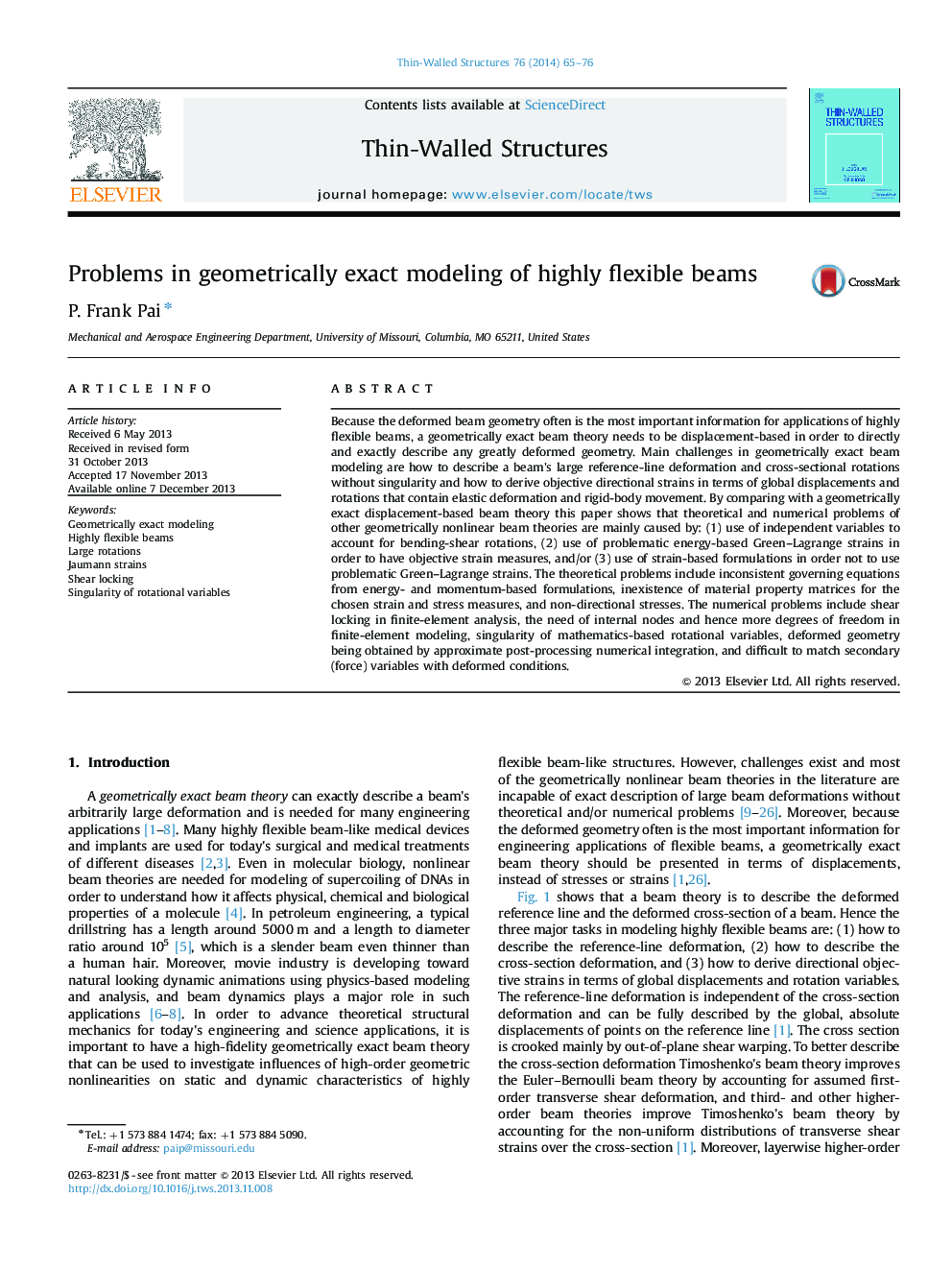| کد مقاله | کد نشریه | سال انتشار | مقاله انگلیسی | نسخه تمام متن |
|---|---|---|---|---|
| 309064 | 513578 | 2014 | 12 صفحه PDF | دانلود رایگان |
• It summarizes a truly geometrically exact displacement-based beam theory.
• It reveals problems of other geometrically nonlinear beam theories.
• Rotation variables for beam modeling are prone to singularity and shear locking.
• Modeling flexible beams using Green–Lagrange strains is problematic.
• Strain-based beam theories are difficult to obtain geometrically exact solutions.
Because the deformed beam geometry often is the most important information for applications of highly flexible beams, a geometrically exact beam theory needs to be displacement-based in order to directly and exactly describe any greatly deformed geometry. Main challenges in geometrically exact beam modeling are how to describe a beam's large reference-line deformation and cross-sectional rotations without singularity and how to derive objective directional strains in terms of global displacements and rotations that contain elastic deformation and rigid-body movement. By comparing with a geometrically exact displacement-based beam theory this paper shows that theoretical and numerical problems of other geometrically nonlinear beam theories are mainly caused by: (1) use of independent variables to account for bending-shear rotations, (2) use of problematic energy-based Green–Lagrange strains in order to have objective strain measures, and/or (3) use of strain-based formulations in order not to use problematic Green–Lagrange strains. The theoretical problems include inconsistent governing equations from energy- and momentum-based formulations, inexistence of material property matrices for the chosen strain and stress measures, and non-directional stresses. The numerical problems include shear locking in finite-element analysis, the need of internal nodes and hence more degrees of freedom in finite-element modeling, singularity of mathematics-based rotational variables, deformed geometry being obtained by approximate post-processing numerical integration, and difficult to match secondary (force) variables with deformed conditions.
Journal: Thin-Walled Structures - Volume 76, March 2014, Pages 65–76
